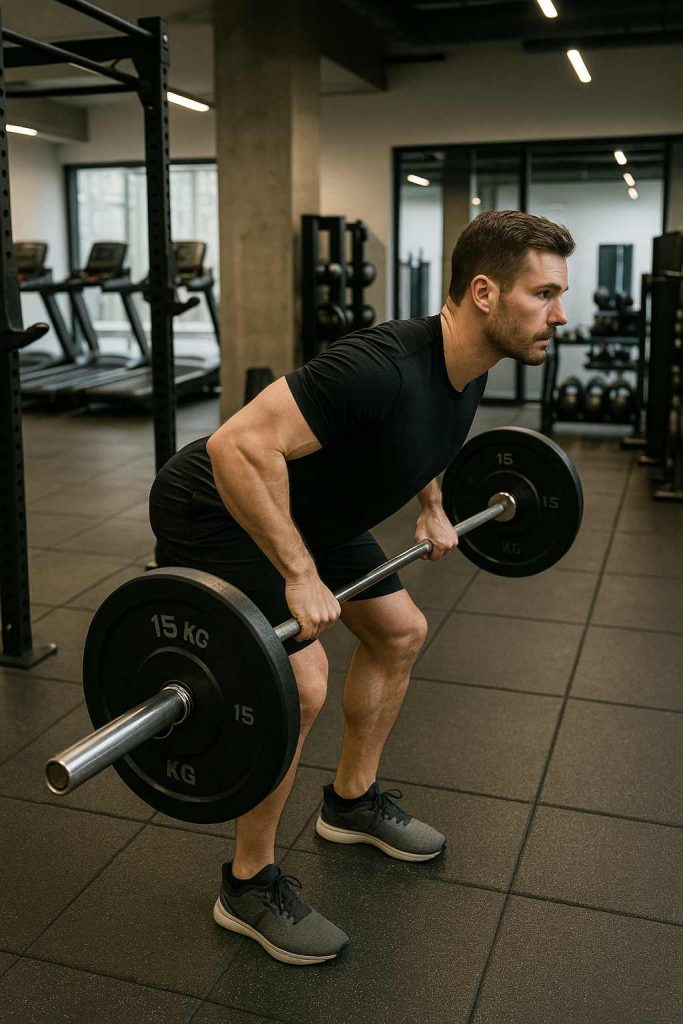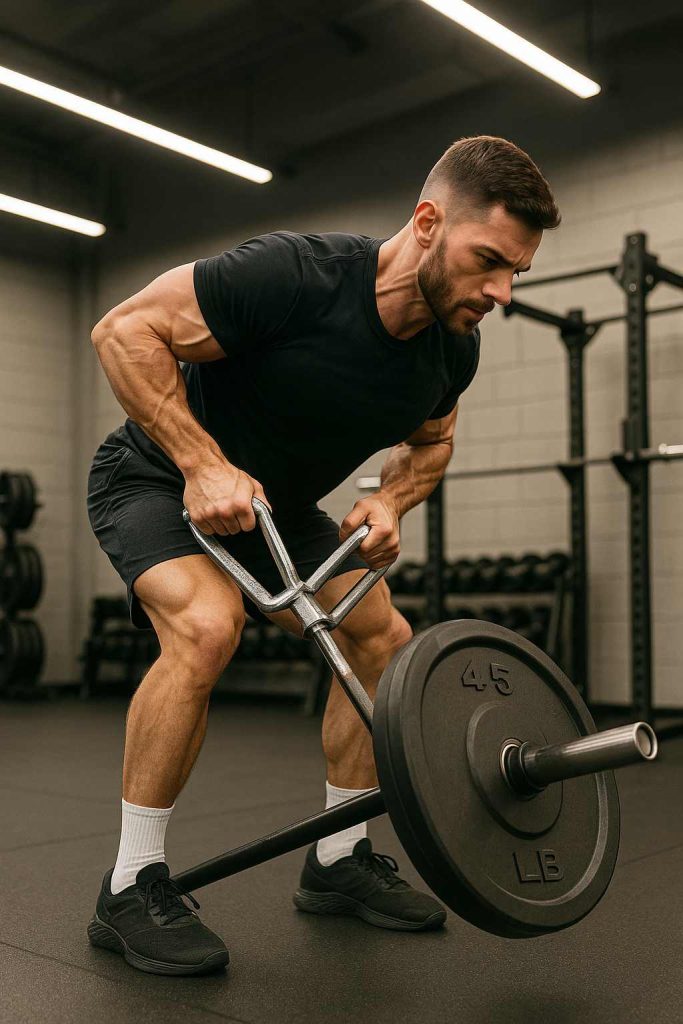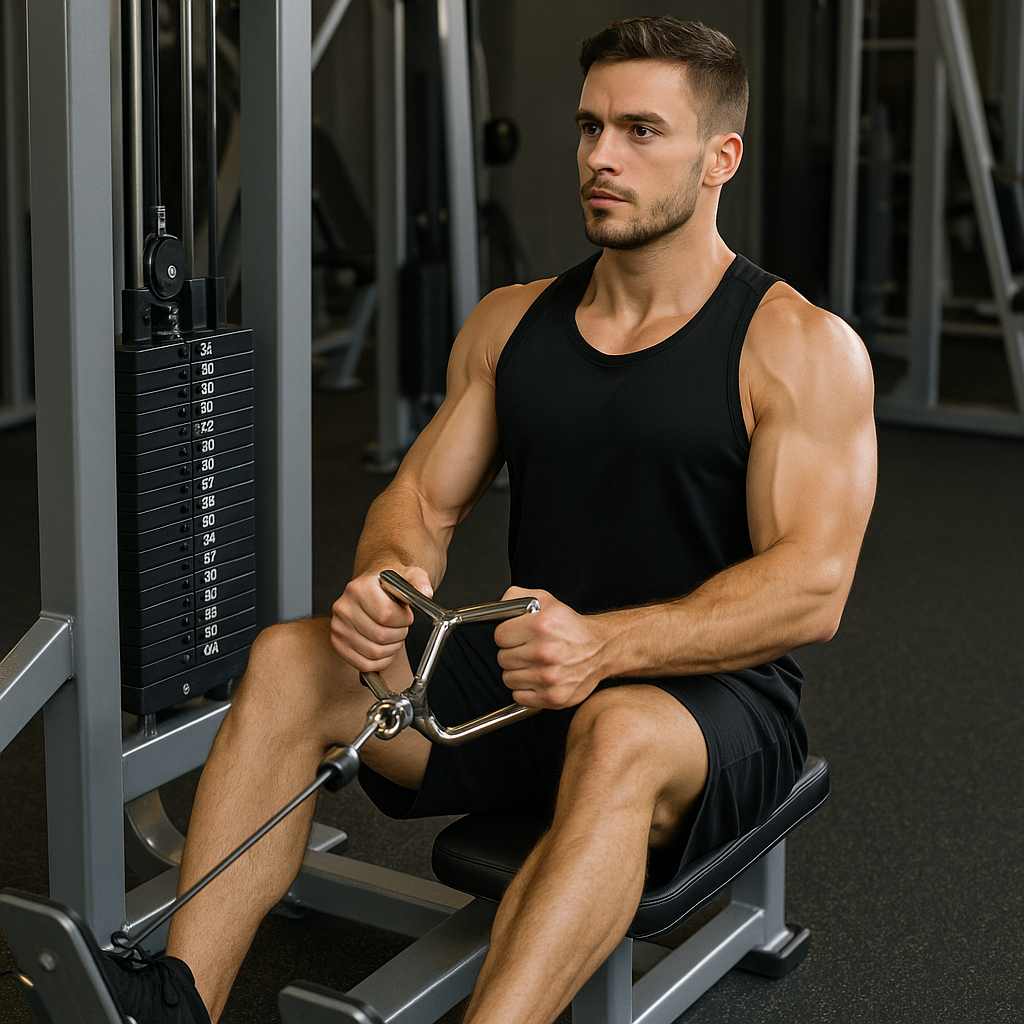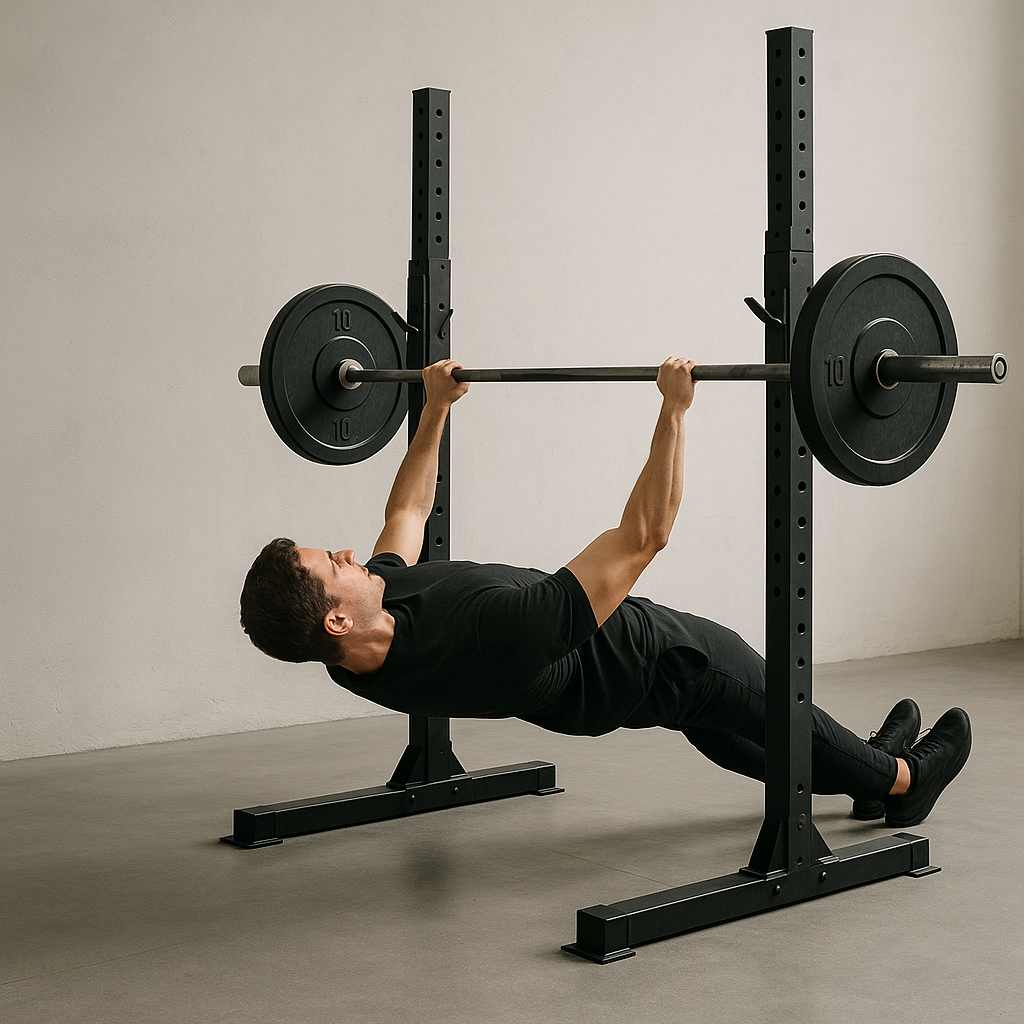The best T-Bar row alternatives include barbell bent-over rows, landmine rows, dumbbell rows, inverted rows, and chest-supported rows—all offering effective ways to build a stronger, wider back without a T-Bar machine. If you don’t have access to a T-Bar row, you still have plenty of proven options to hit your lats, traps, rhomboids, and rear delts.
Understanding T-Bar row alternatives helps you train smarter, reduce injury risk, and keep making progress at any gym—or at home. This guide covers top alternatives, how-to instructions, and expert programming tips for every situation.
- Barbell & dumbbell bent-over rows
- Landmine rows
- Inverted (bodyweight) rows
- Chest-supported machine and cable rows
- Single-arm and Kroc rows for unilateral strength
All options are easy to learn, require minimal equipment, and can be adapted for strength or muscle-building. Let’s dive in!
What Muscles Do T-Bar Row Alternatives Target?
T-Bar row alternatives target the lats, rhomboids, mid-back, traps, rear delts, and biceps, just like the original. They also engage your core and grip muscles.
| Exercise | Main Muscles Worked |
|---|---|
| Barbell Bent-Over Row | Lats, traps, rhomboids, rear delts |
| Landmine Row | Lats, mid-back, lower traps |
| Dumbbell Row (Single/Dual Arm) | Lats, rhomboids, core, biceps |
| Chest-Supported Row | Mid-back, traps, rear delts |
| Inverted Row | Lats, traps, biceps, rear delts |
Best Barbell & Free-Weight T-Bar Row Alternatives
Barbell Bent-Over Row

- How to do it:
- Stand with feet hip-width, hinge at hips, and grip the barbell just outside your knees.
- Keep your back flat and core braced.
- Row the bar to your lower ribs, squeeze your shoulder blades, and lower slowly.
- Pro tip: Use different grips (overhand, underhand, wide) to target new areas. Avoid jerking or swinging.
- Why choose this? Most direct T-Bar replacement, builds strength and muscle mass, uses standard gym equipment.
- Source: Set for Set, 2024
Landmine Row (Corner Row)

- How to do it:
- Place one end of a barbell in a landmine or gym corner.
- Load plates on the free end and attach a V-handle or towel.
- Stand over the bar, hinge at hips, and pull the handle to your upper abs.
- Pro tip: Keeps wrists and shoulders in a more natural position—great for anyone with joint issues.
- Why choose this? Mimics T-Bar movement closely, safe for the lower back, easily adjustable grip.
- Source: American Sport and Fitness, 2024
Dumbbell Bent-Over Row (Dual Arm)

- How to do it:
- Hold a dumbbell in each hand, hinge at hips, and brace your core.
- Row both dumbbells toward your hips or lower ribs.
- Pause, then lower with control.
- Pro tip: Keeps arms moving independently for balanced growth.
- Why choose this? Perfect for muscle imbalances, works grip and stabilizers, minimal setup needed.
- Source: Steel Supplements, 2024
Single-Arm Dumbbell Row
- How to do it:
- Place one knee and hand on a bench.
- With the other hand, row a dumbbell toward your hip.
- Squeeze at the top, then lower slowly.
- Pro tip: Focus on squeezing your shoulder blade to maximize back engagement.
- Why choose this? Great for core stability, perfect for correcting side-to-side weaknesses, can be done with minimal equipment.
Pendlay Row
- How to do it:
- Set up like a bent-over row, but lower until the bar touches the floor each rep.
- Pull explosively, then reset on the floor.
- Pro tip: Ensures strict form and powerful reps.
Best Machine, Cable, and Chest-Supported T-Bar Row Alternatives
Seal Row / Chest-Supported Row

- How to do it:
- Lie chest-down on a flat or incline bench with weights underneath.
- Row a barbell or dumbbells toward your ribs.
- Lower under control.
- Pro tip: Keeps lower back out of the equation—perfect for injury prevention.
- Why choose this? Eliminates cheating and swinging, safer for those with back pain, superior isolation for upper back.
Seated Cable Row / Machine Row

- How to do it:
- Sit with your feet on the platform, grab the handle, and sit tall.
- Pull the handle to your navel, squeeze, and release with control.
- Pro tip: Try different handles (V-bar, straight bar, rope) for muscle variety.
- Why choose this? Constant tension throughout the movement, low injury risk, easily adjustable weight.
- Source: Healthline, 2024
Best Bodyweight T-Bar Row Alternatives
Inverted Row (Australian Pull-Up)

- How to do it:
- Set a barbell in a rack at waist height or use a Smith machine.
- Lie under the bar, grab it with an overhand grip, and keep your body straight.
- Pull your chest to the bar, pause, and lower.
- Pro tip: Bend your knees for an easier version; elevate feet or add weight for more challenge.
- Why choose this? Perfect for home gyms, scalable for all fitness levels, engages entire back and core.
- Source: Self, 2024
Programming Tips: How to Use These Alternatives
- Sets & Reps: Start with 3–4 sets of 8–12 reps for muscle growth; 5–8 reps for strength.
- Rest: 60–90 seconds between sets for muscle-building; 2 minutes for strength focus.
- Variety: Rotate two or three of these alternatives weekly for best muscle development.
- Form First: Prioritize slow, controlled reps and full range of motion over heavy weights.
- Progressive Overload: Gradually add weight or reps each week to continue making gains.
Expert Note: According to American Council on Exercise, 2024, maintaining proper posture is key for all row variations to avoid back injury.
Frequently Asked Questions
What is the closest alternative to a T-Bar row?
The landmine row with a V-handle most closely mimics the T-Bar row’s mechanics.
Are these alternatives as effective as T-Bar rows?
Yes—most alternatives offer equal or better back activation, especially when rotated in your program (Set for Set, 2024).
Can I build a big back without a T-Bar row?
Absolutely! The alternatives above are used by pro bodybuilders and athletes worldwide.
Conclusion
You don’t need a T-Bar machine for a powerful, muscular back. Barbell rows, landmine rows, dumbbell rows, cable rows, and bodyweight inverted rows all deliver results—when performed with proper form and progressive overload.
Experiment with a few and stick with the variations that feel best for your body and setup. Your back will thank you!
